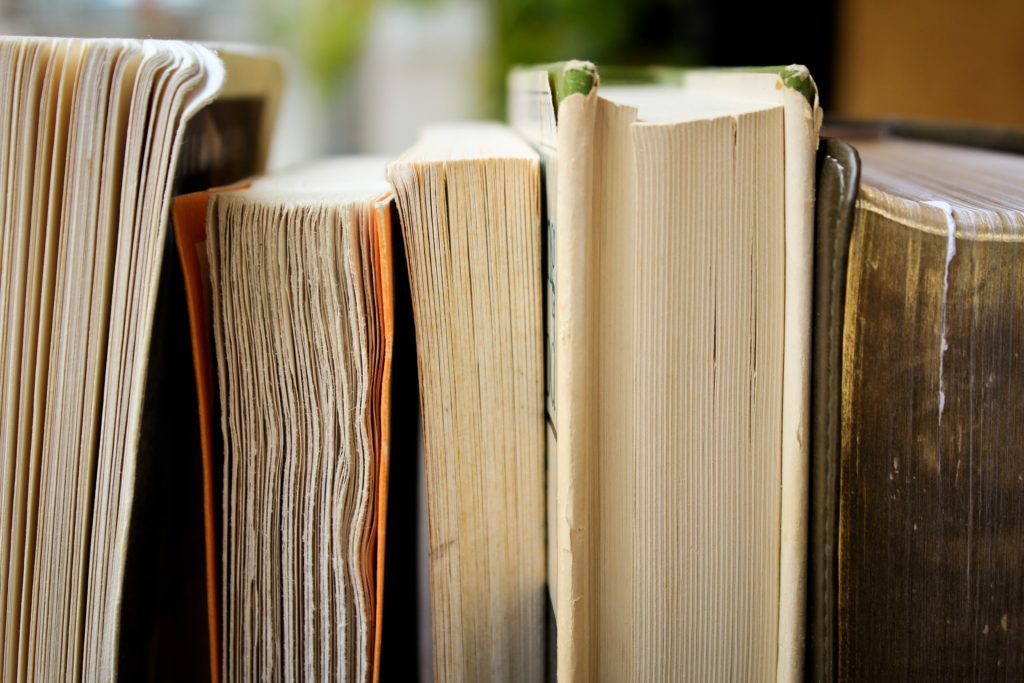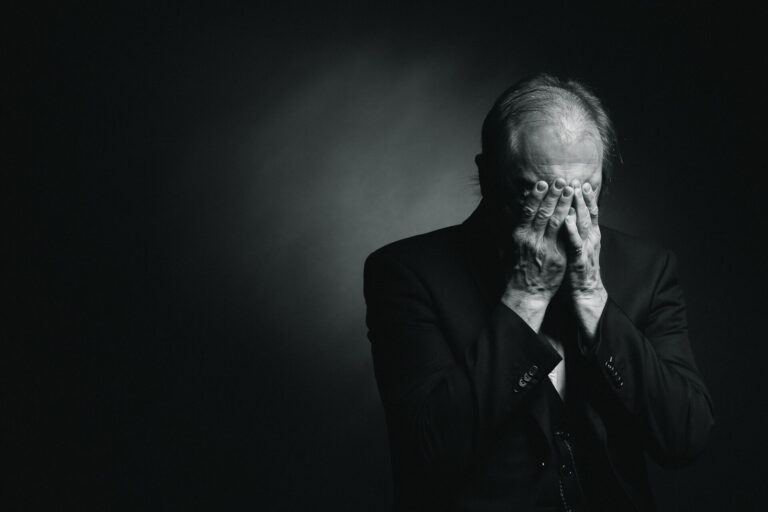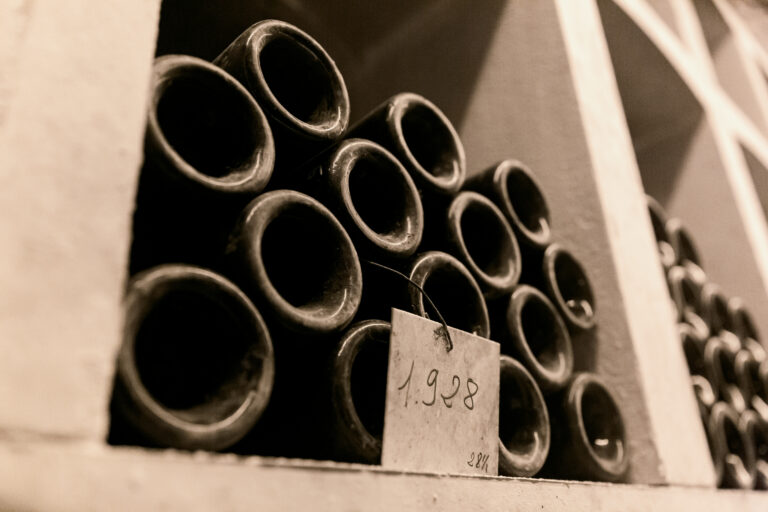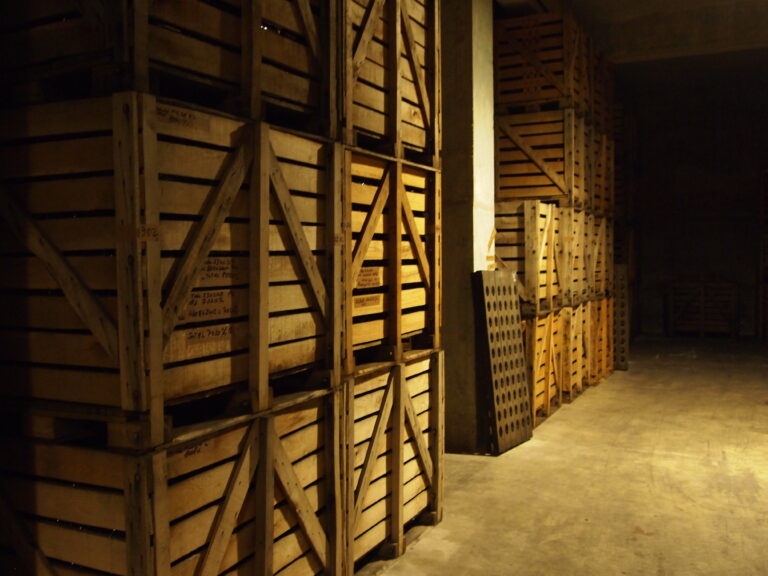For Richard, Krug is more than a Champagne. It is a word that stands for artistry, tradition, craftsmanship, and moments of pure pleasure.
For the first time in the 170 year history of the Maison Krug, the legendary Champagne house has asked its devoted admirers to tell their own stories about their experiences with Krug Champagne. With everyone from Brigitte Bardot and Serge Gainsbourg to filmmaker Francis Ford Coppola and even Olivier Krug, grandson of founder Joseph Krug, voicing their thoughts and experiences, the results are interesting and make for great “tasting notes” without listing fruits and such. After all, with wine, so much of it is about the personal experience – the where, the why, and with whom all add to create, in the best cases, something special. The moment, and the wine for that moment, can stay with us forever. This is what great wine can achieve, and something this book captures.

RJ ON KRUG The Krug family has used the same methods since the house was founded in 1843 by Johann-Joseph Krug from Mainz. It is hardly likely that the Krug philosophy will be abandoned in the foreseeable future, since it has brought so much success. Put simply, that philosophy means that all the wines are fermented cru by cru in well-aged 205-liter barrels from the Argonne and central-east France. The wines are seldom filtered: they undergo just two rackings, by gravity, from cask to cask. Nor do they induce a malolactic fermentation, which is one of the reasons for Krug’s fantastic aging potential. None of the wines is disgorged before it is six years old, and the reserve wines are stored in stainless-steel tanks from the Swedish company Alfa Laval.
The firm’s least costly wine, Grande Cuvée, is made from 118 wines from ten different vintages. Naturally the raw materials are also of the very highest class. Twenty hectares in Aÿ, Ambonnay, Le Mesnil, and Trépail are owned by the house, but above all it is the network of prestigious contracts with some of the region’s best growers that answers for the quality, as the growers consider it an honor to supply Krug with grapes.
Johann-Joseph Krug, the founder, learned his Champagne craft at Jacquesson and, when he regarded himself as qualified after nine years there, he set off to Reims to start his own house. After Joseph’s death his son Paul took over and built the powerful Krug dynasty, followed as he was by Joseph Krug II in 1910 and Joseph’s nephew, Jean Seydoux, in 1924. It was he, together with Paul Krug II, who created the famous cuvées, and it was only in 1962 that the legendary Henri Krug took over.
Today the wines are made by Eric Lebel and Olivier Krug is the president. They work undisturbed and independently, despite the fact that the firm is owned by LVMH. All Krug’s wines are small masterworks, and although Grande Cuvée may be lighter and fresher than its predecessor, Private Cuvée, after a few extra years in the cellar it outshines the competitors’ vintage Champagnes. Unfortunately I have to note a small question mark for the latest blend.
Clos du Mesnil is a charmer that combines the best Blanc de Blancs while simultaneously distinguishing the wine with the house’s own distinct style. For me, Krug Clos du Mesnil is he best wine in the world! The Clos d´Ambonnay is a shockingly expensive rarity that has only just been launched. The most costly young champagne in the world is worth 3,000 euros per bottle which does not seem to frighten away Krug fans since all 3,000 bottles are already booked up. The wine itself is fantastic most especially since it is clearly a brother belonging to the same sibling group in the Krug family. This wine is much more the breath of Krug than of Ambonnay, just as the Clos du Mesnil is in its own niche.
It feels as though all Krug wines receive a last tiny squirt of Krug perfume that distinguishes them from everything else wherever their origins. It matters not if others copy the methods with old, small oak barrels, no malolactic fermentation, aging for 12 years and other technicalities. It is still impossible for them to copy Krug.
I think that the Clos d’Ambonnay is very reminiscent of the ordinary vintage and is astonishingly enough only marginally more full-bodied than the latter. A blanc de noirs with fantastic finesse far beyond all ungainliness. Its freshness and phenomenally long aftertaste are however the most striking things about this magnificent wine. The bouquet is richly creamy with a hint of hazelnuts and brioche along with papaya preserves and mango. The flavour balances between fairytale mellowness and a freshness that is similar to a 96. A new world-class wine has been born.
The vintage Krug is now in competition with the Clos wines, but if we go backward in time, this is without doubt the best champagne of them all. The 1996 is pure magic and the 82 Collection is super. If the opportunity arises, never miss the chance to drink a Krug! Vintage Krug competes with today’s Clos du Mesnil, but if we go backward in time, it is without doubt the best Champagne. The 1990 is pure magic. If the opportunity arises, never miss the chance to drink a Krug!
Read more about the book at winesout. You can buy the book at amazon.





